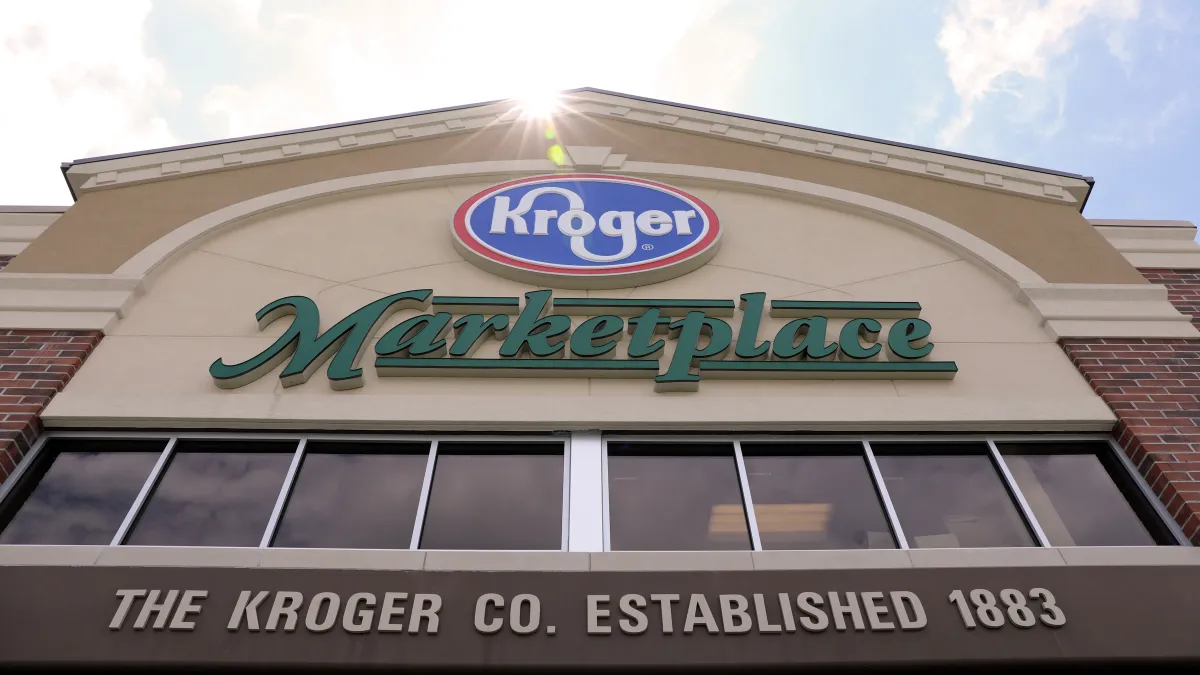Dive Brief:
- Kroger’s digital sales grew 92% during Q1 as many safety-conscious shoppers opted to get their groceries delivered to their homes and cars. Kroger added delivery and store pickup slots and waived the $5 fee for its pickup service in order to drive shopper engagement.
-
Gary Millerchip, Kroger’s chief financial officer, said Kroger’s digital sales growth in April and May was in the triple digits, and industry-wide sales for the latter month were up more than $6 billion. Shopping behaviors are starting to normalize, Millerchip said. Consumers are stocking up to a lesser degree than early in the pandemic, and they’re starting to make more impulse purchases. Comparable sales in the first two weeks of Q2 are in the mid-teens but expected to taper off from that level.
- Kroger said it expected to exceed its guidance for 2020, but did not provide a detailed update due to uncertainty around consumer trends, safety restrictions and operational investments. The company hired 100,000 workers during the quarter.
Dive Insight:
In its first quarterly report outlining the full impact of the coronavirus on its business to date, Kroger showed considerable strength in its store and online operations as shoppers toggled between the two channels.
The company benefited from stock-up buying in March that emptied shelves of toilet paper, baking supplies and other products, with comparable-store sales up 30% for the month. As consumer buying shifted online, Kroger was able to capitalize through its nationwide network of store-based pickup and delivery services. Kroger offers pickup from more than 2,000 stores and delivery from 2,400 locations. It rapidly added fulfillment slots throughout the quarter to meet booming demand.
Kroger Chairman and CEO Rodney McMullen said delivery sales growth outpaced pickup early in the quarter, but is now more evenly spread across the two services. In addition to expanding fulfillment, Kroger communicated more frequently with shoppers about its e-commerce services. It also expanded its pickup service to SNAP customers.
“Our heavy investments in technology enabled us to reliably sustain the incredible, almost overnight demand for our pickup and delivery services,” McMullen said during the company’s Thursday morning earnings call.
In May, shoppers began to return to stores as their comfort level grew, stay-at-home restrictions eased and other businesses began to reopen. According to data from Placer.ai, Kroger’s year-over-year store traffic declined 13.7% in April, then eased to a 4.5% decline in May.
Still, Kroger's online sales have continued to grow as shoppers adjust to using retailers’ platforms and as many remain reluctant to visit stores or restaurants.
Despite its ability to meet omnichannel demand, Kroger executives said the arc of the virus and its short- and long-term impact on consumer trends remains unclear. Although most states are easing restrictions and letting businesses reopen, infection rates are rising in places like Texas and Florida. That could mean an eventual return to stay-at-home orders this summer, or in the fall when health experts anticipate a surge in cases.
"Part of the challenge is it's very hard to know exactly how we expect the customer behavior to return to whatever a new normal becomes," Millerchip said during the earnings call. "We certainly expect, as states have reopened, to see a gradual return to some lower level of food eaten at home, but we do think that's going to be more gradual than a specific stair step down."















